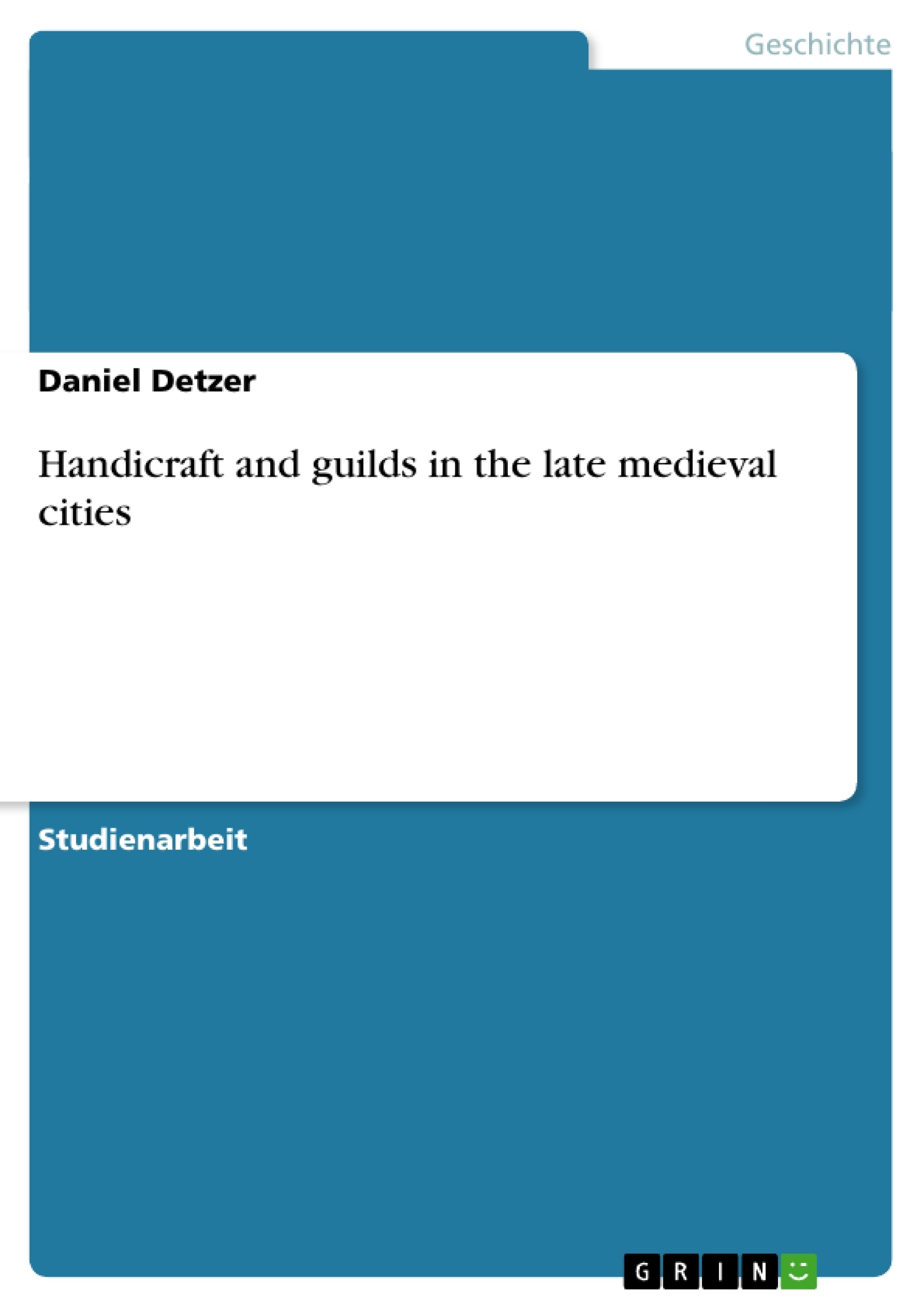Handcrafts played a vital role in the cities of the medieval times. In the fourteenth century for example, about 50 percent of the citizens of Nürnberg worked in the craft business. 50 percent and more was possible for the bigger cities in those times. Because of the importance of the crafts business I will deal with this topic in my homework. In the first part I’ll focus on the handicraft enterprises in the cities and their special features in the medieval times. Then I’ll discuss the system of apprenticeship, because it was quite modern for those times. Furthermore I will show that the foundation of cities and the development of the handicraft contributed to each other. Afterwards I’ll focus on the craft guilds. In this part of the homework I’ll give you a short overview, how guilds developed and in which way they were organised. Then I’ll give an overview on functions of guilds and finally I’ll deal with the question, whether guilds contributed to progress or if they handicapped it.
Inhaltsverzeichnis
- 1. Introduction
- 2. The handicraft
- 2.1 The occupational distribution in the medieval cities
- 2.2 Features of crafts enterprises
- 2.3 Apprenticeship and time as journeyman
- 2.4 The positive influence of the foundation and development of Cities on the handicraft and the early division of labour
- 2.5 The positive effect of the handicraft on the foundation of cities
- 3. The guilds
- 3.1 Definition
- 3.2 Origin of the guilds
- 3.3 The guild's organisation
- 3.4 The guild's functions
- 4. Conclusions
Zielsetzung und Themenschwerpunkte
Diese Hausarbeit befasst sich mit der Bedeutung von Handwerk und Zünften im spätmittelalterlichen Städtewesen. Die Arbeit untersucht die Entstehung und Entwicklung des Handwerks in Städten sowie die Rolle der Zünfte als organisatorische Struktur und deren Einfluss auf die wirtschaftliche und gesellschaftliche Entwicklung der Städte.
- Entwicklung des Handwerks in mittelalterlichen Städten
- Die Bedeutung der Zünfte für die Organisation des Handwerks
- Die Auswirkungen von Handwerk und Zünften auf die städtische Wirtschaft und Gesellschaft
- Das System der Lehre und die Ausbildung von Handwerkern
- Die Rolle von Handwerk und Zünften im Kontext der frühen Arbeitsteilung
Zusammenfassung der Kapitel
Kapitel 1: Introduction: Die Einleitung erläutert die Bedeutung des Handwerks im mittelalterlichen Städtewesen und die zentrale Rolle, die es in der städtischen Wirtschaft spielte.
Kapitel 2: The handicraft: Dieses Kapitel beschreibt die verschiedenen Berufsfelder, die im mittelalterlichen Städtewesen existierten, die Merkmale der Handwerksbetriebe und das System der Lehre. Es beleuchtet auch den positiven Einfluss der Stadtgründungen auf die Entwicklung des Handwerks und die frühe Arbeitsteilung.
Kapitel 3: The guilds: In diesem Kapitel werden die Zünfte als organisatorische Strukturen des Handwerks behandelt. Die Entstehung, Organisation und Funktionen der Zünfte werden erklärt. Die Frage, ob Zünfte den Fortschritt förderten oder behinderten, wird im nächsten Kapitel untersucht.
Schlüsselwörter
Handwerk, Zünfte, mittelalterliche Städte, Lehre, Arbeitsteilung, Stadtentwicklung, Wirtschaft, Gesellschaft, Berufsfelder, Handwerksbetriebe, Organisation, Funktionen, Fortschritt.
- Citation du texte
- Daniel Detzer (Auteur), 2006, Handicraft and guilds in the late medieval cities, Munich, GRIN Verlag, https://www.grin.com/document/127487



